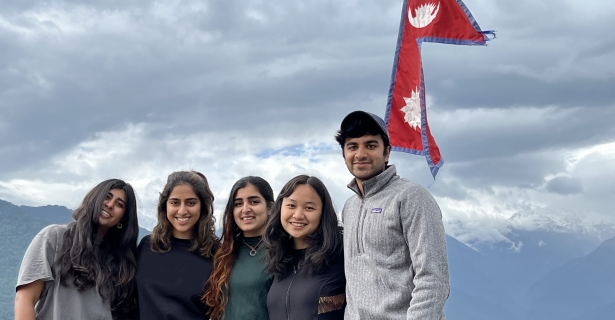On Thursday morning (26th May), we woke up early in Nepal to see the sun rise over the Annapurna range, illuminating some of the highest peaks in the region— Machhapuchhare (Fishtail), Himchuli, and the various Annapurna peaks. The purpose of our four-day trek was to gather insight about the mountaineering and tourism industries following the impact of Covid-19, which Ingyin was researching. To this end, she interviewed guides and various people working in these sectors. We learned that government policies, both in Nepal and neighboring China — such as lockdowns, border closures, and vaccination requirements — had left many in the industry jobless and forced them to seek alternative work. Our guide on the trek recounted some of his personal experiences, mentioning that he had worked numerous jobs over the last two years unrelated to his expertise, including at a bakery.
In interviews conducted on Friday the 27th, people including restaurant owners and lodge managers said that the trekking and mountaineering industries, as well as the tourism sector at large, were only now starting to recover from the effects of the pandemic, but revenues remained meager compared to pre-spring 2020 levels. This claim was supported by our own observed experience, as Janya and Arjun had travelled to Nepal in the past and could tell that the numbers had greatly dwindled since they had been here.
On the morning of Sunday the 29th, Arjun conducted an interview with one of the premier minds in academia studying the Nepal-India-China trilateral relationship, Dr Pramod Jaiswal. Dr Jaiswal stressed the importance of realism in Nepalese foreign policy decision making, noting that national interests and the maintenance of sovereignty through policy independence was of utmost importance to the Nepalese government.

